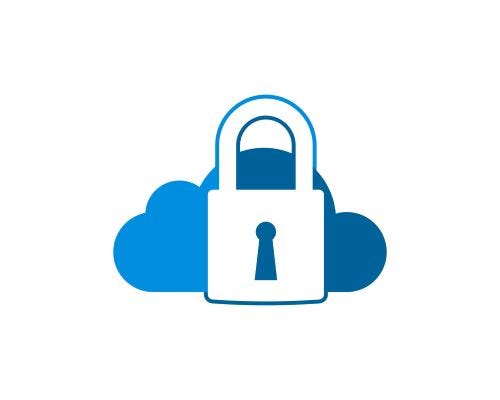Unveiling the Layers: A Deep Dive into Implementing the Zero Trust Security Model in the Cloud
In the ever-evolving landscape of cybersecurity, the Zero Trust Security Model has emerged as a beacon of defense against evolving threats. As organizations increasingly migrate to the cloud, implementing Zero Trust becomes not just a best practice but a necessity. In this technical deep-dive, we’ll explore the intricacies of applying the Zero Trust model specifically in cloud environments, backed by relevant examples and actionable insights.

Understanding Zero Trust in a Cloud Context
The Core Tenets
Zero Trust operates on the principle of “never trust, always verify.” In a cloud setting, this translates into treating every user, device, and network as potentially compromised, regardless of their location or origin. Let’s dissect the core tenets of Zero Trust and understand how they manifest in the cloud.
1. Verify Identity:
Cloud-based identity and access management (IAM) services, such as AWS IAM or Azure AD, ensure robust user authentication and authorization.
2. Least Privilege Access:
Granular permissions for cloud resources grant users and applications the minimum access necessary for their roles using AWS IAM Roles or Azure RBAC.
3. Micro-Segmentation:
Cloud-native network security groups create micro-segments within the network, isolating workloads and reducing the lateral movement of threats.
4. Continuous Monitoring:
Cloud-native monitoring services like AWS CloudWatch or Azure Monitor enable continuous monitoring, anomaly detection, and real-time threat response.
Implementation Challenges in the Cloud
1. Dynamic Nature of Cloud Resources
Cloud environments are dynamic, with resources being provisioned, scaled, and de-provisioned dynamically. Traditional security models struggle to keep pace with this dynamism. Zero Trust, however, embraces the cloud’s fluidity.
– Automated workflows with Infrastructure-as-Code (IaC) tools like Terraform or AWS CloudFormation ensure security policies are consistently applied as resources are provisioned or updated.
2. Cloud-Native Applications
Modern applications often leverage microservices architecture and serverless computing, challenging traditional security perimeters. Zero Trust adapts by scrutinizing each interaction.
– API security policies using tools like AWS API Gateway or Azure API Management ensure that each interaction adheres to defined security standards.
The Role of Identity in Zero Trust
Single Sign-On (SSO) and Multi-Factor Authentication (MFA)
Identity is the linchpin of Zero Trust, and in the cloud, Single Sign-On (SSO) and Multi-Factor Authentication (MFA) are crucial components.
Cloud identity providers like AWS Cognito or Azure AD B2C offer seamless and secure user authentication, coupled with MFA for an additional layer of verification.
Continuous Authentication and Authorization
In a Zero Trust model, the notion of a user being authenticated once and then trusted indefinitely becomes obsolete. Continuous authentication ensures that trust is an ongoing, dynamic process.
Cloud identity services implement adaptive access policies, adjusting permissions based on real-time risk assessments. AWS Identity Providers and Azure AD Conditional Access Policies are key players here.
Micro-Segmentation in the Cloud: A Practical Guide
Network Security Groups (NSGs) and Security Lists
Cloud environments demand a nuanced approach to network segmentation. In AWS, Network Security Groups (NSGs) play a vital role, while Azure employs Security Lists.
Crafting NSGs or Security Lists to define and enforce communication rules between cloud resources reduces the attack surface and minimizes lateral movement.
Tools and Technologies for Implementing Zero Trust in the Cloud
Cloud-Native Security Services
Cloud providers offer a suite of tools specifically designed to align with Zero Trust principles. Let’s explore some noteworthy examples.
1. AWS Security Hub:
A unified security console that aggregates, organizes, and prioritizes security findings from multiple AWS services.
2. Azure Security Center:
A centralized hub for monitoring security across Azure, offering threat protection, detection, and response capabilities.
Overcoming Challenges: Best Practices and Recommendations
Embracing DevSecOps
Integrating security into the DevOps pipeline is imperative for a successful Zero Trust implementation. Let’s delve into best practices.
Embedding security checks into CI/CD pipelines using tools like AWS CodePipeline or Azure DevOps ensures that security is considered at every stage of the development lifecycle.
Education and Awareness
User awareness is pivotal in the Zero Trust model. Educating users and teams on security best practices fosters a culture of vigilance.
Conducting regular training sessions on recognizing phishing attempts and promoting responsible data handling practices in a cloud environment.
The Future of Zero Trust in Cloud Security
As cloud environments continue to evolve, so too will the Zero Trust model. From advancements in AI-driven threat detection to tighter integration with emerging technologies, the future promises even more robust security measures.
Conclusion: A Future-Proof Security Paradigm
Zero Trust in the cloud is not a mere aspiration; it’s an imperative. By understanding its core tenets, overcoming implementation challenges, and leveraging cloud-native tools, organizations can fortify their security posture in an era where adaptability and resilience are paramount. The journey to Zero Trust is not just a technological evolution; it’s a cultural shift towards continuous vigilance and a commitment to securing the digital frontier.
